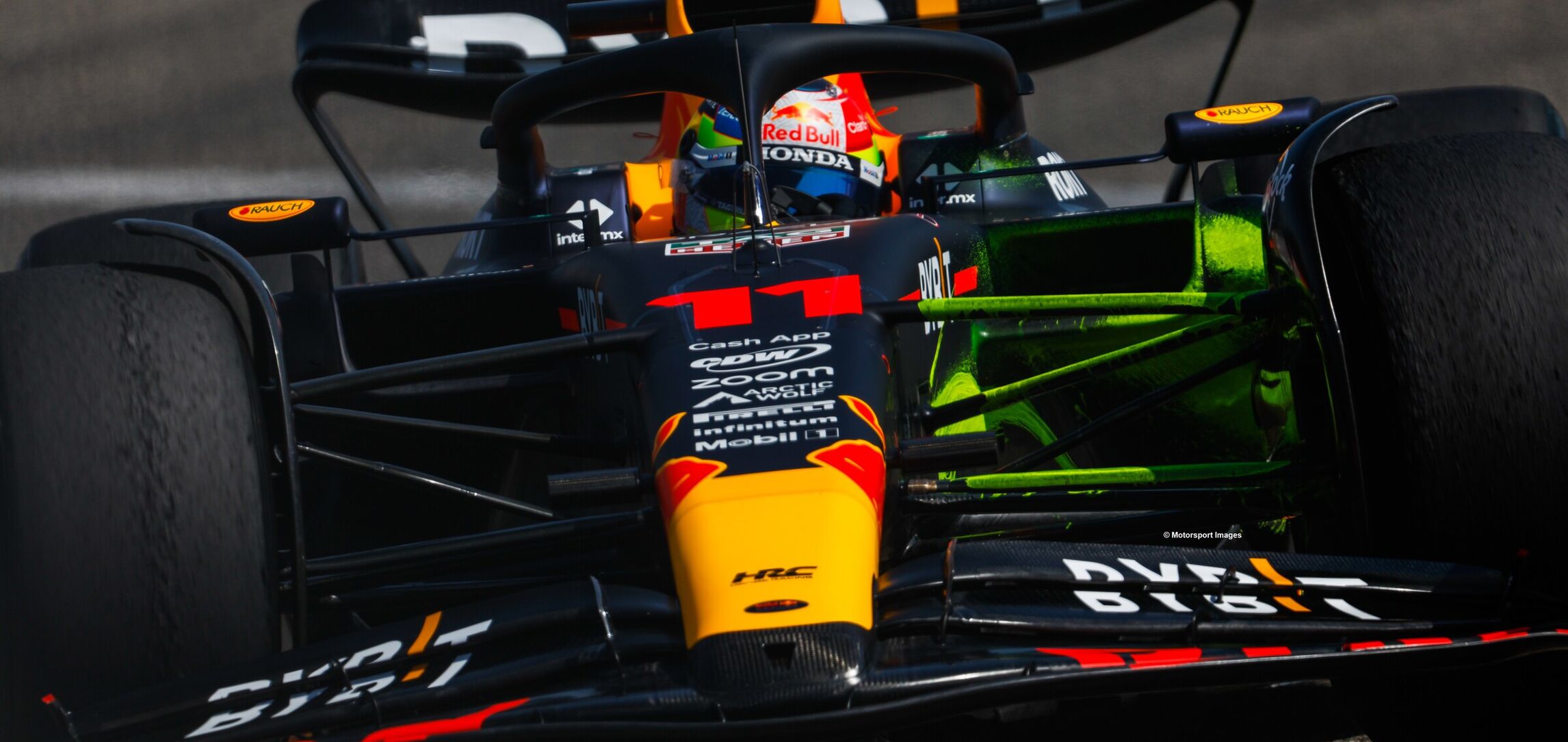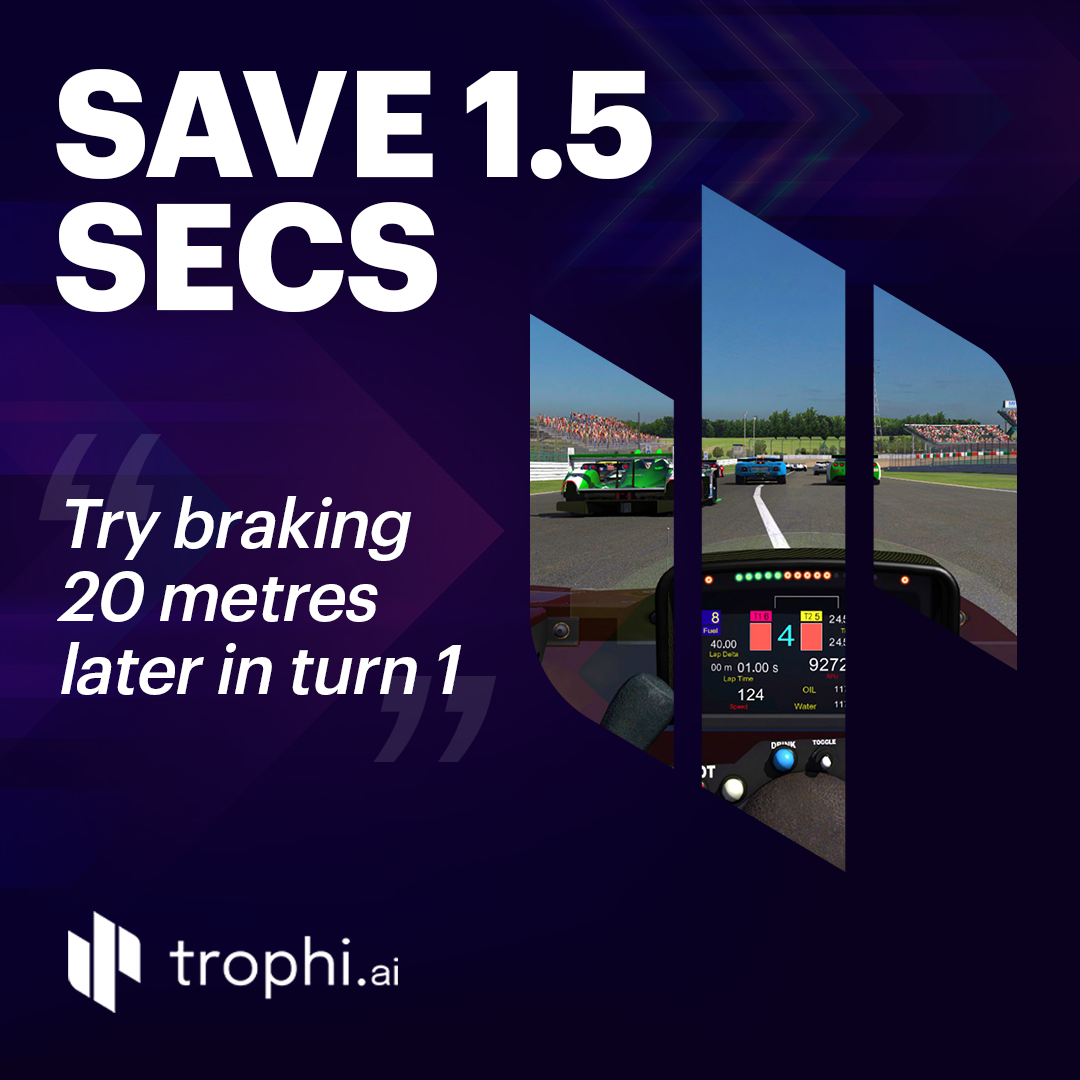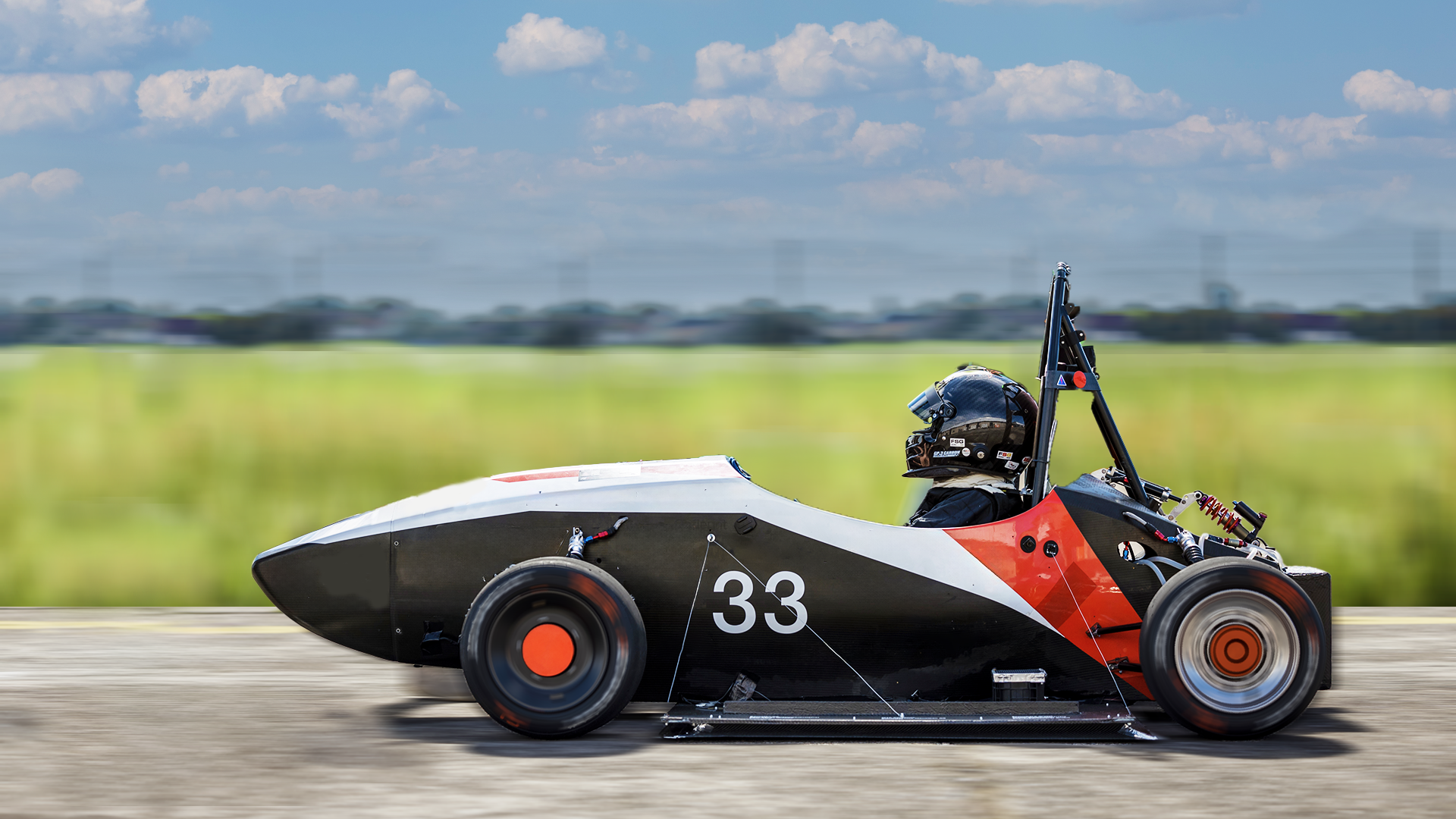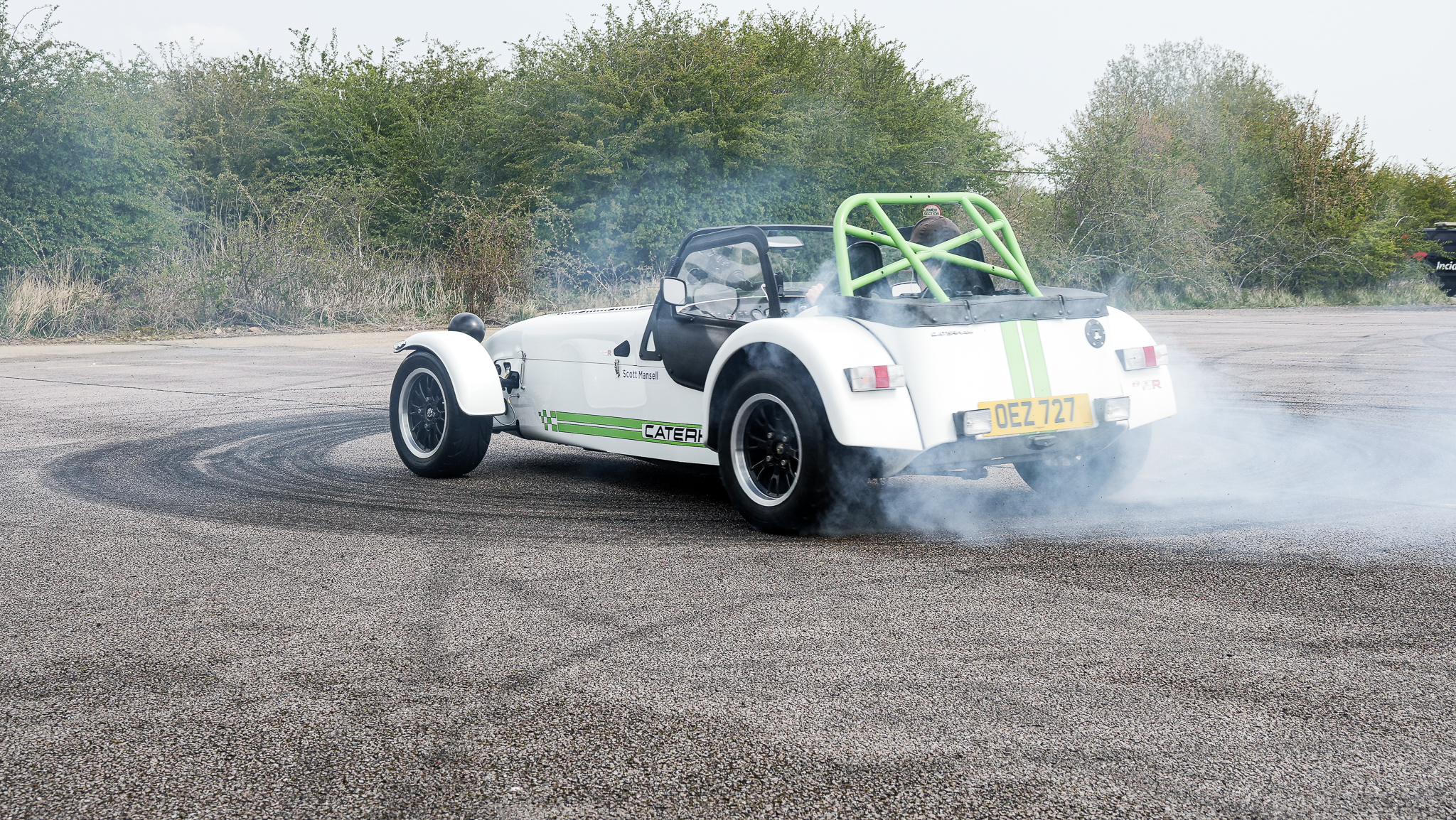The Ultimate Guide to Learning a New Circuit
Today we’re going to cover how to learn a circuit as efficiently as possible.
Track time is expensive and sometimes we don’t have much time to learn a new circuit, so I’m going to share with you a step-by-step guide to getting up to speed as quickly as possible.
Welcome to tutorial number nine in our Driver’s University series. This tutorial will cover:
- What you need to learn at a new track
- The do’s and don’ts of using video, simulators and driver coaches
- Walking the circuit
- Your first laps on a new track
- How to quickly get up to pace
When I was 19, I took my career to the USA. It was a step into the unknown for me and aside from learning a whole new culture, I had to learn a load of new and difficult circuits too.
Back then many of the American tracks were more ‘old school’ than those in Europe. This meant exciting, if a little dangerous, circuits with little room for error. At the age of 19, everything I was doing racing wise was on instinct – I didn’t have a strategy for getting the most out of my driving.
This article is the guide I wish I’d had then when testing budgets were none existent and I had to learn the circuits during race-weekend practice sessions.
Things You’ll Need to Know
You may think learning a new track is just about understanding which way the next corner goes, but there’s way more to in that that. To be properly quick at any circuit you’ll need to know in detail:
- Which way the circuit goes – important for obvious reasons!
- Surface changes – as circuits evolve over the years, different sections may be resurfaced causing differences in grip levels
- Bumps – affect grip level and how quickly a car might break traction
- Curbs – more important to know at the older circuits, where there are big differences in construction
- Braking references – for the larger deceleration zones, using references can bring you up to pace more quickly
- Circuit camber – the more camber a corner has, the more load goes through the tyre, equalling more grip
- Elevation – when a car is pushed into an elevation (think the rise to Druids at Brands Hatch) it has more grip
- Where it’s safer to push – knowing where you can make a mistake and get away with it will help you get up to speed more quickly
OTHER THINGS TO KNOW
There are a few other things that are important to know regarding racing and track days – they won’t make you any faster, but as a good driver you should know them:
- Start/finish line location – they can be slightly different and are important to know for obvious reasons
- Green flag line location – important to remember when racing. If there’s a safety car, you’ll need to know when you can overtake. Some championships allow overtaking as soon as the flag is waved, whereas others will make you wait until you’re over the line
- Where the pit entry is – often overlooked when learning a circuit. Always find out where it is before you head on track and have a look for it on your first lap
- Where the pit speed limit lines are – crucial for racing with pit stops. You can make up a lot of time by attacking the pit entry/exit lines.
- Overtaking/defending areas – for track days know where the safe areas (straights) are for overtaking. For racing, there’ll be some common areas where it’s easier to overtake – usually tight corners after long straights, so make sure you know these
Research Phase – Absorb as Much Information as Possible
USE OUR CIRCUIT GUIDES
Along with these driving technique tutorials, I have produced some video circuit guides (see them here), where I examine in great detail – almost frame-by-frame – laps from various tracks.
I draw over the onboard footage and commentate to explain braking references, lines, curbs and more from the driver’s eye view. There are only a few guides at the moment, but I’ll be adding more in the coming months.
These guides are useful both before and after your time on track. Before you head to a circuit, watch the guides to learn the progression of corners and get some idea of the racing line. After you’ve completed some laps, watch the guides again, when you’ll be more familiar with the circuit and can focus on the more detailed information.
WATCH VIDEOS (WITH CAUTION!)
YouTube is a fantastic resource for finding some extra info about a circuit. However, and it’s a big however, be careful. Just because someone knows how to upload a video to the internet doesn’t mean that their technique and racing lines are world-class.
Once you’ve sifted through all of the sub-standard driving and Project Cars video game replays, you might find some decent stuff. And due to the sheer number of videos, you’re likely to find a video of a car similar to yours at the circuit you want.
So, you’ve found a good driver, in your car, at the circuit you’re heading to. What’s next? When watching a video you’ll want to take note of a few things. Here’s what I usually do:
- Watch the whole lap a few times – this helps you to ‘get into the flow’ of the circuit
- Start to look at racing lines, most importantly apex points (think distance along an inside curb) and how much exit curb the driver is using – pause or slow down the footage if necessary
- Examine where a driver is braking for the large deceleration zones – think about references that you can search for when you’re on the track
- Estimate the corners speeds – I’m not talking about +/- 1mph accuracy here, but knowing which gear the driver is in will help
It’s also worth noting down a few valuable pointers including potential braking references, apex points and other things you feel you might need on a track map. The process of writing down this information will help you recall when you’re in the car and close to your mental capacity.
It’s also worth me saying that you cannot just head out onto the track and copy a fast driver right away. I’ll go into getting up to speed quickly later in the article, but when watching videos it’s impossible to know how the cars or circuit might differ – you’re only using video as a rough aid.
USE A RACING SIMULATOR
Watching videos is all well and good, but the next step is to get into a simulator. Top quality sims are expensive (£20,000+) but it’s possible to hire them on an hourly basis at around £150 per hour, which is still expensive but cheaper than learning a track in a GT3 Aston.
Many of the circuits in the simulator software are laser scanned and I must say the detail and realism are incredible – bumps, curbs and grip levels are all very close indeed. It’s possible – and increasingly likely – that your car will be in the software too, meaning sim lap time won’t be far from real lap time.
The best way to use a sim is for track learning – and later to help improve consistency. I use sims a lot with my drivers, especially when they haven’t been to a circuit before. If they’re new to sim driving, we’ll leave many of the driving aids on and lap as much as possible without constantly spinning the car.
It’s also a good idea to have a coach with you. They can transfer their real-life experience to the sim, pointing out references, apex points and areas where you might need to be careful.
Practical Phase – Time to get on Track
So, you’ve watched our circuit guides, found a quick driver’s video on YouTube, made some notes, done 300 laps in a sim and now it’s finally time to feel the real tarmac. Thank goodness.
If you’re time limited or you’re racing in an expensive GT car, you’ll want to get up to speed as quickly as possible.
Without a doubt, the best way to do this is by utilising a good driver coach. I’ve had amateur race drivers who think they don’t need a coach and waste so many days of track time before they finally realise the efficiency of learning from a pro.
Driver coaches can be expensive – you’ll pay £350-£500 a day for a decent one – but I genuinely believe you’ll get up to speed three or four times faster. When you put the cost into the whole scheme of things, the day rate becomes relatively cheap.
A driver coach will help you in a number of ways:
- Their existing experience both of the circuit and driving technique will bring you up to speed quickly
- They’ll be able to sit next to you in the car and explain any issues with racing line or technique
- The coach can set a reference lap for data and describe where you’re losing most time
- You can sit next to the coach to feel how the car should be driven
VISIT THE CIRCUIT IN A SLOWER CAR
If you’re racing a fast car or are new to driving on track, it’s really worthwhile visiting a new circuit in a slower track day car – think MX5 or similar.
This is something that I do with all of my drivers because it allows them to learn a circuit in detail, while the car is still naturally being pushed (sliding) on the racing line.
If you try and learn a track in a quick race car, you’ll reach your mental capacity promptly meaning that it’s simply harder to absorb information.
Once you know every inch of the circuit in a slower car, it’ll be much, much easier to be fast in your race car.
WALK THE TRACK
For a really zoomed in view of the circuit, you should walk the track. For me, walking the track is something of a ritual. Even if I’ve been to the circuit 50 times, I’ll still walk it on a Saturday night. You see things on a track walk that you never see when you’re driving.
It’s best to walk the track once you’ve already done some laps, as you’ll then understand the proper racing lines and braking points which might be difficult to understand without track experience. When walking the track you should be looking out for:
- Surface changes – while you can’t define the level of grip, you can take note that there’ll likely be a grip shift
- Curbs – really understand how harsh a curb is, how much of it you can take and whether it’ll be slippery in the wet
- Bumps – a little difficult to see when walking, yet still important to try and find
- Exit astroturf/grasscrete – good to understand in case you run wide, often it’s possible to drive on astroturf/grasscrete and not lose any time
- Run off/danger areas – you should look out for areas where it’s possible to make a mistake and run wide without any danger. These are the areas where you can first push the braking limits in relative safety. On the other hand, look out for areas where there isn’t much run off and you should build speed more gradually.
Aside from looking at the detail of the circuit, you should also take mental snapshots of the turn-in, apex and exit points on your track walk.
Make sure that your head height is at the same level as it would be in your car and you’re in the same position on the track. Then sit there for a little while and take it all in. It sounds a little woo-woo but these visualisation techniques really work and will help you get in the ‘zone’.
FIRST LAPS IN A RACE CAR (MORE SLOWLY)
So finally it’s time to get in your car! By now you should be well prepared and at least know where the circuit goes.
Your first laps on track should be taken slowly, with wide and long vision so you absorb as much information as possible. If you go too quickly out of the box, you’ll use all of your mental capacity keeping the car on the track and learn nothing. Here’s what you a step-by-step process to learn the track as quickly as possible:
- Take the first laps at 60-70% speed – absorbing as much information as possible
- Make sure your vision is a long way ahead and broad
- Make a later apex than you would usually – this gives you a little bit of room for error, as you won’t run out of road on the corner exits
- Focus on getting the racing line right and flowing before worrying about finding the edge of grip
- Find the grip limit in the slower and safer corners (most run-off) first
- Bleed off the brakes earlier than you might usually to cause the car to understeer (see our weight transfer tutorial for an explanation)
- If you have a data logger, use the time delta to help find time. The time delta shows a driver whether he in faster or slower than his fastest lap at that particular point on the circuit. I use this all the time for trying different lines and seeing which is quickest – I’ll go over this in more detail in a later tutorial.
- Once you’ve finished the session, compare the data to your coaches’ lap and work on the areas with largest time difference
- Make notes of braking references, apex points and information on curbs, bumps and so on. The process of ‘downloading’ this information will help your driving and awareness.
WHERE TO OVERTAKE? WATCH RACE FOOTAGE
Ideally, the first time you go to a circuit won’t be on a race weekend – therefore, it won’t be necessary to understand which are the main areas for overtaking and defending.
However, if you’re racing it’s important to know where the standard overtaking zones will be, so you’re already prepared to attack (and possibly defend) in these areas.
A quick YouTube search for British Touring Car action will highlight all of the possible – and sometimes impossible – places to overtake on various UK circuits. It’s also important to see that when you’re racing in a ‘train’ of cars, the racing line can completely change as everyone in the train is in defence mode.
Learning a new circuit is tough – especially if you need to learn the track in huge detail, but your biggest take away should be to do as much preparation as possible beforehand and when you do finally get on the track, take things easy to keep some mental capacity open for learning the circuit.
That’s all for this week, thanks for reading and I’ll see you next time, Scott.














